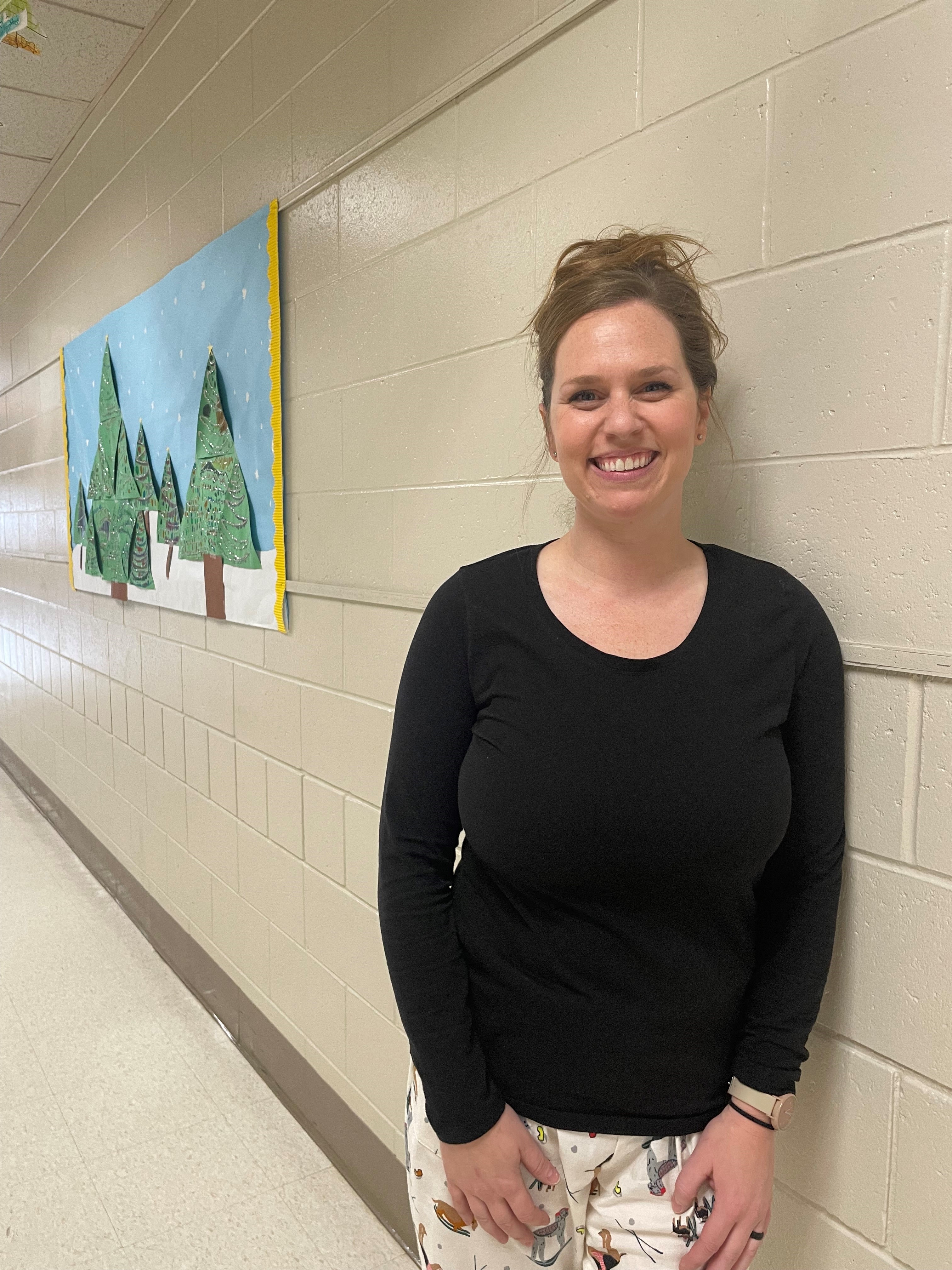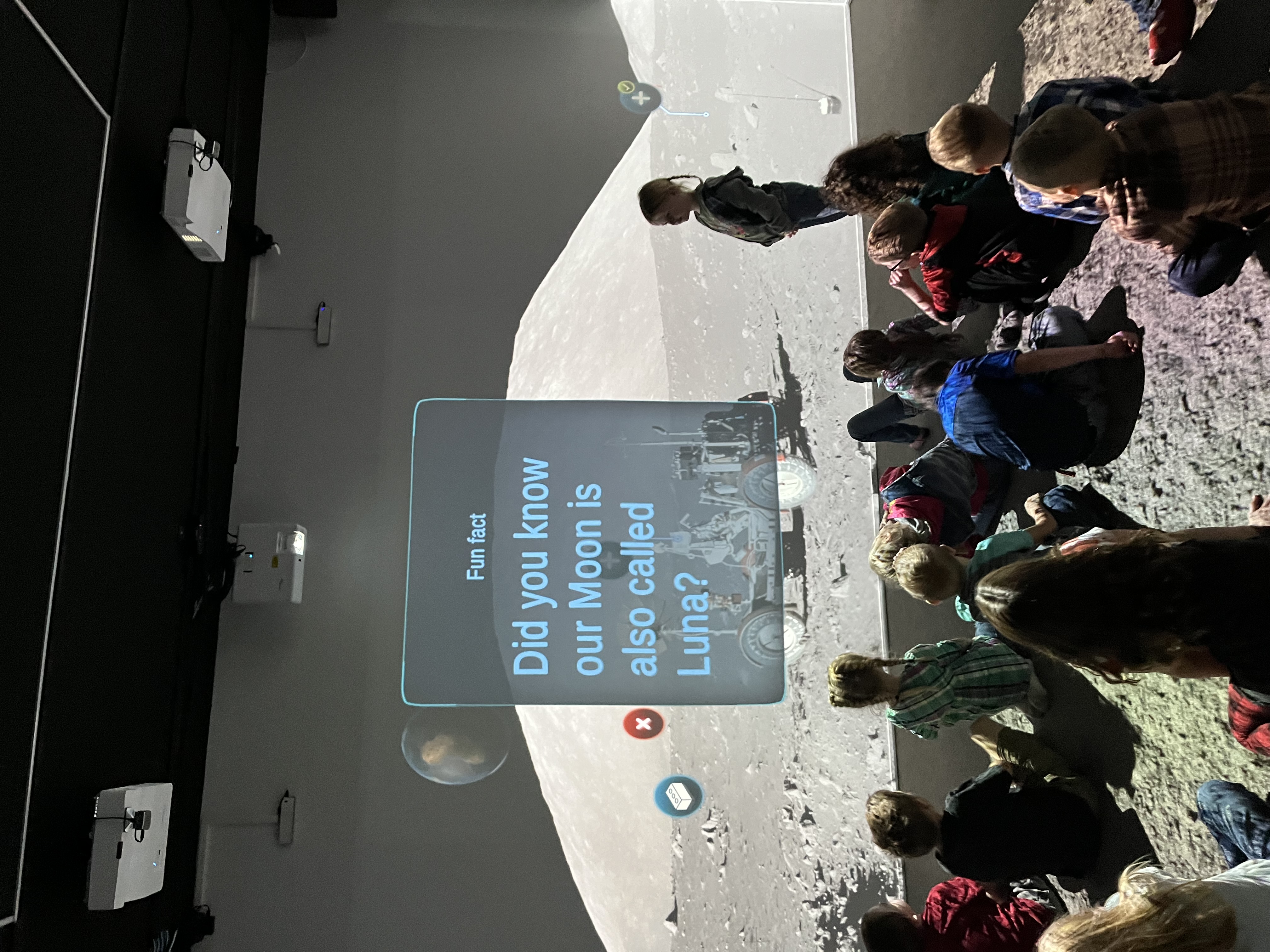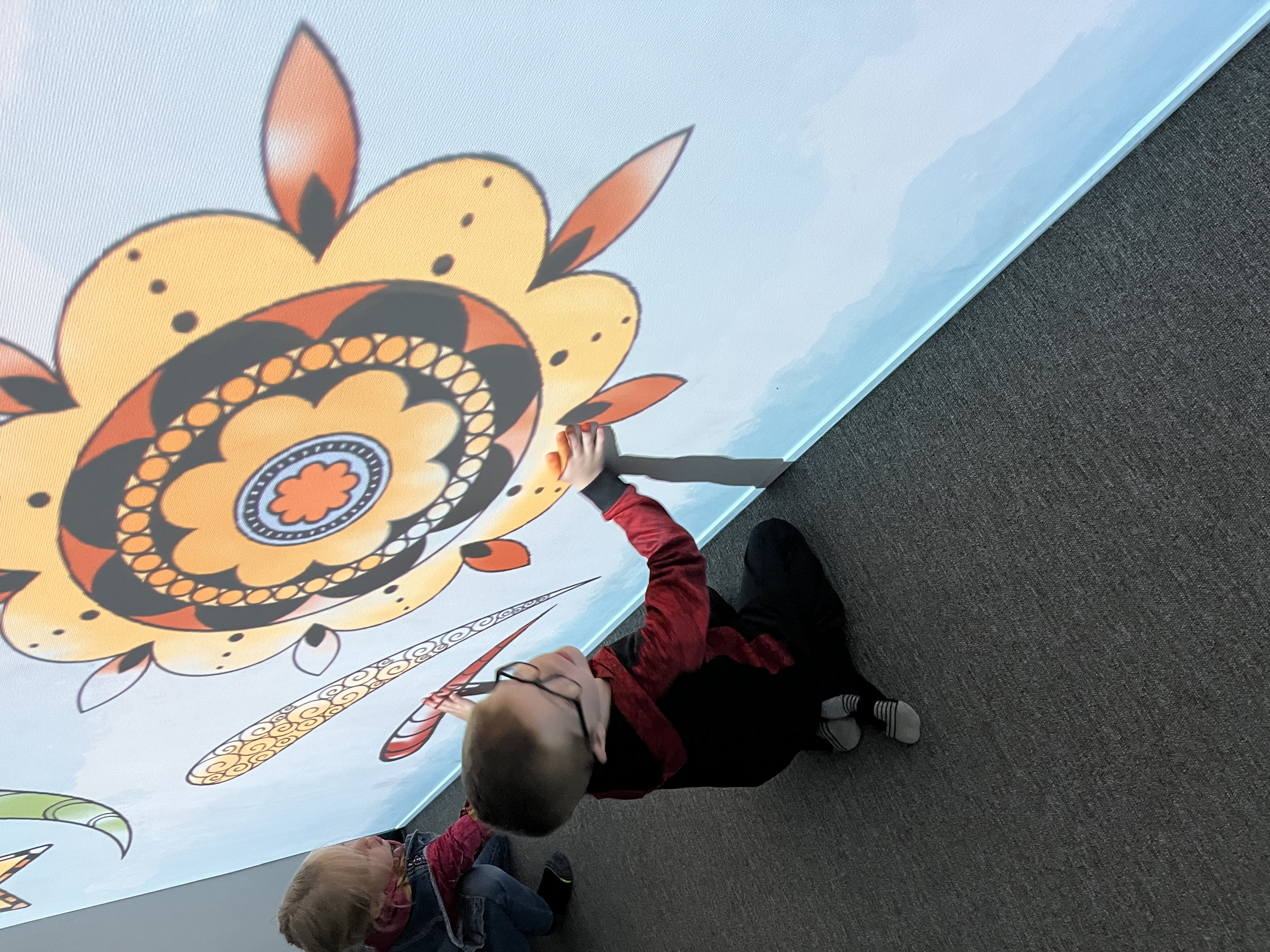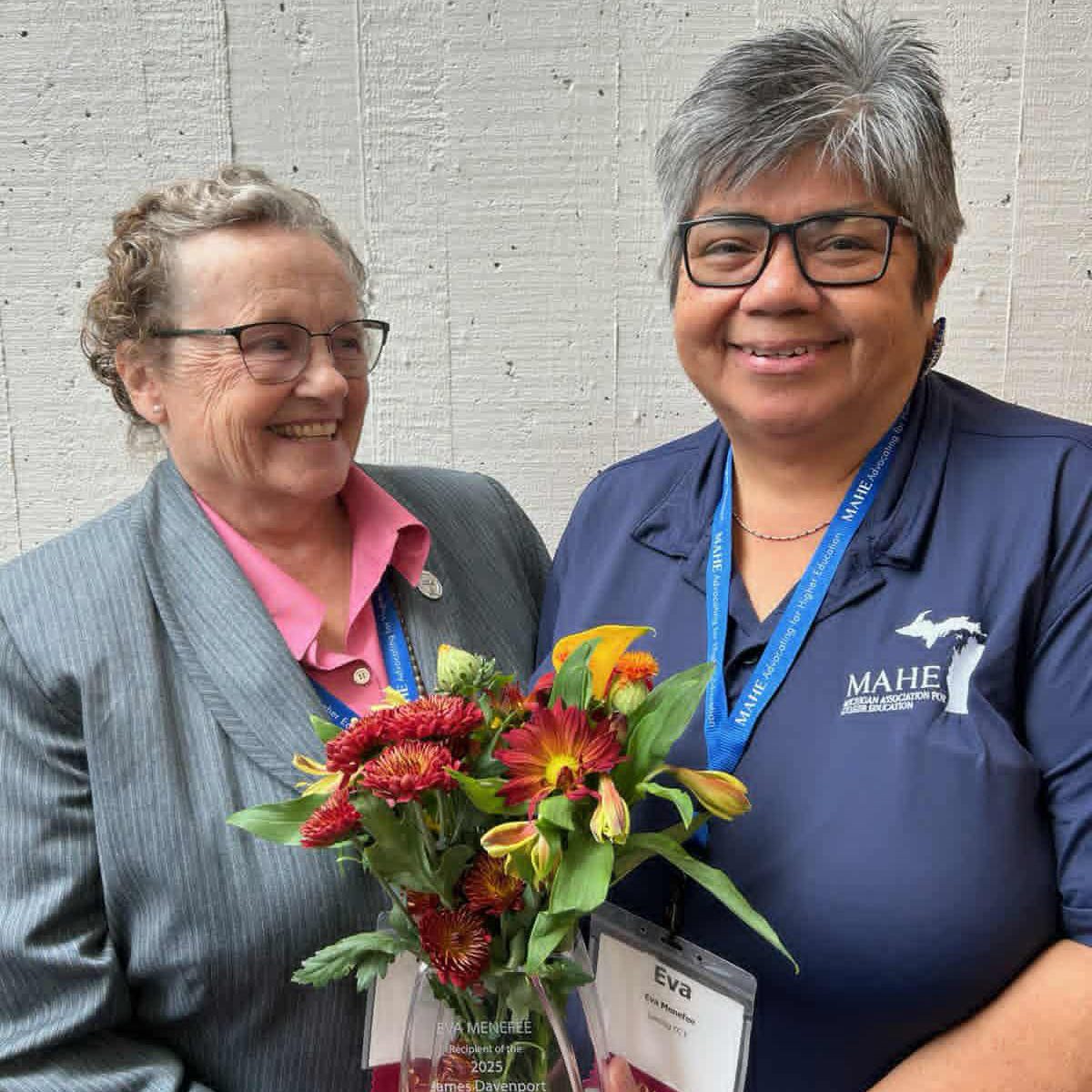Rural Michigan students travel the world and solar system in immersive room
By Heather Palo
MEA ARP Organizer
Last year MEA member Marissa Rodriguez took ninth graders on a tour of World War I trenches, and she transported sixth graders to countries where certain products began the manufacturing process – then brought them across the globe to watch those consumer items journey to store shelves.
A social studies teacher in Scottville’s Mason County Central (MCC) School District, Rodriguez used a new Immersive Room – which opened at the high school just over a year ago – to better engage students in history and economics lessons so they understand more and retain what they learn.
With interactive touch-screen video on three sides of students in the room and under their feet – plus sensory details such as sounds and even smells piped in – the Immersive Room is a type of Virtual Reality that can create a four-dimensional experience for kids in all grade levels studying all subjects.

“I feel like it made the learning deeper for students,” Rodriguez said.
Enriching student learning was the goal when leaders in the rural district east of Ludington dedicated federal American Rescue Plan funding to install the Immersive Room for K-12 use, according to Miguel Quinteros, the district’s technology coach and a MEA-Retired member educator.
“COVID pushed people to think outside the box,” Quinteros said. “This is all about making learning more fun, relevant and interactive.”
The American Rescue Plan in 2021 boosted the Elementary and Secondary School Relief (ESSER) Fund to help schools address ongoing challenges arising from the global pandemic. Michigan schools received $5.6 billion in ESSER grants with Sept. 30, 2024 as the final deadline for ESSER spending.
In 2022 MCC became the first K-12 district in the country to install the learning system from Echo Education Technology, part of a larger company that is already a leader in providing realistic medical simulation equipment and technology worldwide – long a staple of health care training.
District needs assessments and surveys indicated a desire to use ARP funds to benefit every student and spark interest and excitement. “We wanted to do anything we could to motivate learning and have students want to come to school,” said Angie Taylor, the district’s director of state and federal programs.

In addition to sensing flowing air, smells (where applicable) and surround sounds, participants get a realistic experience from being immersed on three sides by high-quality video beaming from seven projectors, Taylor said, adding for example: “There is an ocean presentation that takes you deep into the water, and you can feel the motion.”
Many children in the 1,200-student district come from disadvantaged backgrounds and have never traveled outside of Mason County, Quinteros said.
“We cannot afford to take students on many field trips, so now we use this technology to create experiences that otherwise would not be possible for them.”
For example, in the space of a day or two the Immersive Room allows different students to visit locations, events and time periods as varied as the moon, the Civil War era, an active volcano, the Mackinac Bridge, an art museum, a World Cup soccer game and the imaginative world of the popular children’s story The Gruffalo by Julia Donaldson.
First graders in MEA member Sara Morrow’s class went for a lesson on moons in the solar system, lunar eclipses, tides, and more. As students entered, surrounded by our moon’s lunar landscape, their steps left footprints in the moon’s surface below their feet.

They learned facts from a holographic narrator and got a better sense of the difference in gravity between the earth and moon by “tossing” interactive images of concrete blocks and watching them float down slowly to the moon’s surface.
The room was silent as astronaut Neil Armstrong walked on the moon and spoke his famous words – “That’s one small step for man, one giant leap for mankind’’ – with the lunar landing module in the background. Students then took turns pressing touch points to prompt discussion and checks for understanding.

At the end of the lesson, Quinteros included a fun activity, dividing students into two teams that competed to destroy the most alien space ships by tapping the cartoon objects as they moved on-screen. In a final calming move, students used their hands and fingers to color on-screen butterflies, stars and flowers.
Morrow said her students love visiting the room, and it’s wonderful to have a resource that serves to enhance curriculum at every grade level. “The students benefit from having different experiences that tie into the content in an interactive way,” Morrow said.
As the district’s tech coach, Quinteros was a champion of the project from its inception and serves as the room’s facilitator. Teachers sign out the room and select the lesson they want to cover. Quinteros accesses content created by the developer and other users and creates some material himself.
For a high school lesson on the Mackinac Bridge, Quinteros filmed a trip across the span using a special 360-degree camera. Aerial footage from high above the bridge was also incorporated to provide vivid imagery as the high schoolers learned about Lake Michigan and Lake Huron.

Learning material is embedded via the room’s numerous screen sensors which allow students to touch a spot in a video – including in the floor under their feet at times – to interact with objects or zero in on information and questions related to the lesson.
District leaders anticipate in the near future using the room for professional learning by staff and to build partnerships and outreach in the community. In addition, MCC plans to offer immersive experiences for local senior citizens and add inter-generational activities for seniors and students.
“Literally the options for this technology are endless,” Quinteros said.
Editor’s Note: At mea.org/arp, find related stories on various ways Michigan districts are spending federal ESSER money. To share how your district is spending that funding, or if your local union needs help to have a voice in decisions (which is mandated in the spending bill), contact Heather Palo, MEA ARP organizer, at hpalo@mea.org.



